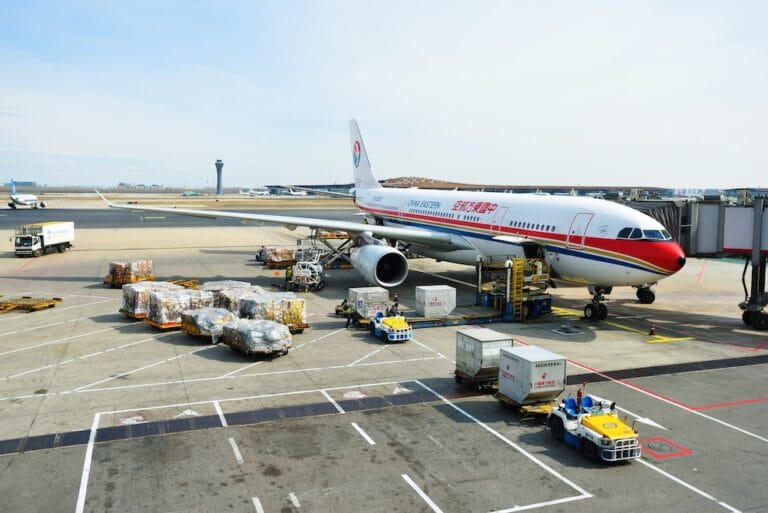As the world’s largest exporter and one of the leading players in global trade, China continues to shape the dynamics of the international air cargo market. In 2023, international air cargo capacity from China saw a growth of 26 percent, reflecting its strategic role in connecting East Asia with global markets.
“The Chinese air cargo industry is no longer just a logistics facilitator; it’s a key enabler of global trade,” Ge Jinmei, a researcher from the China Academy of Civil Aviation Science and Technology, stated.
China’s air cargo hubs, including Shanghai Pudong International Airport and Guangzhou Baiyun International Airport, are central to this growth. These airports have not only expanded their physical capacities but also adopted advanced digital technologies to streamline cargo operations, reduce delays, and enhance efficiency.
Steady growth
China’s air cargo market has been on a steady growth trajectory, driven by its robust manufacturing base, the rise of e-commerce, and increasing global trade integration. Jinmei highlighted that between 2010 and 2023, the nation recorded an annual average growth rate of over 4 percent in international cargo volume. Despite global disruptions like the Covid-19 pandemic, the air cargo sector demonstrated resilience, showcasing a significant recovery in 2022 and 2023.
China’s strategic position as a hub for global trade has been bolstered by infrastructure investments, including the development of state-of-the-art cargo terminals and enhanced intermodal connectivity.
For instance, international cargo capacity from China increased by 26 percent year-over-year in 2024, with freighter operations accounting for a substantial portion of the growth. Passenger-to-cargo (P2C) conversions also played a crucial role during periods of constrained capacity in the passenger sector.
Regional performance
The Central and Western regions of China emerged as the fastest-growing contributors to the country’s air cargo exports, with year-to-date growth rates of 29 percent and 26 percent, respectively. These regions benefit from rising industrial bases, improved logistics networks, and governmental incentives to promote trade diversification.
Key international trade lanes, such as those connecting China to Europe and North America, remain dominant. However, markets in Southeast Asia and Africa have shown significant potential, driven by growing trade partnerships, including China’s Belt and Road Initiative.
Jinmei highlighted several factors contributing to the sustained growth of China’s air cargo market which is majorly contributed to the e-commerce boom. With the rise of platforms like Alibaba and JD.com, the demand for efficient logistics has surged. Cross-border e-commerce shipments have grown exponentially, prompting airlines to add more cargo flights to key destinations in Europe and North America. “e-commerce has redefined the logistics landscape in China,” she remarked. “Air cargo now plays a critical role in ensuring timely delivery for international customers, creating a seamless global shopping experience.”
Furthermore, technological innovations like the integration of AI, big data analytics, and blockchain in supply chain management has been transformative. These technologies are optimising flight routes, enhancing cargo tracking, and improving customs clearance processes.
Jinmei noted: “Technology is at the heart of China’s logistics evolution, enabling cost efficiency and real-time transparency.”
On the fronts of policy support and investments, Jinmei underscored the importance of government initiatives, such as the Belt and Road Initiative (BRI), in driving the development of the air cargo sector.
The construction of new logistics corridors and free trade zones has facilitated faster movement of goods, particularly to emerging markets in Central Asia and Africa. With the Sustainability Initiatives by airlines and airports in China are increasingly investing in sustainable technologies, including fuel-efficient aircraft, electrification of ground handling equipment, and initiatives to reduce carbon emissions across the supply chain.
Shifting dynamics
Jinmei also highlighted emerging trends that are reshaping the air cargo industry in China, which are contributing to the robust Regional Diversification, While traditional export hubs in coastal areas remain dominant, regions like Central and Western China are experiencing significant growth. For instance, cargo volumes in Chengdu and Xi’an have increased by 29 percent and 25 percent, respectively, reflecting a strategic shift toward inland development.
It was also analysed in the report that, the rising competition in freighter operations has put Chinese logistics giants in expanding their dedicated freighter fleets, competing with traditional carriers. Companies like SF Express and Cainiao are rapidly building global networks to capture a larger share of the air freight market.
China’s industry
Looking ahead, Jinmei shared a positive outlook for China’s air cargo market. The sector is expected to maintain a compound annual growth rate of approximately 5 percent through 2030. Strategic policies such as the 14th Five-Year Plan for Civil Aviation and the Belt and Road Initiative will continue to fuel growth by fostering new trade corridors and enhancing international partnerships.
The researcher also highlighted the importance of digital transformation. Technologies like blockchain for supply chain transparency, artificial intelligence for predictive analytics, and Internet of Things (IoT) devices for real-time monitoring are set to redefine the efficiency of air cargo operations.
China’s role as a global air cargo leader remains indisputable. However, success in the coming years will hinge on its ability to navigate challenges, invest in innovation, and adapt to shifting market conditions.
As Jinmei concluded: “China’s air cargo market is not just expanding; it’s evolving into a smarter, greener, and more resilient ecosystem. Its impact will be felt far beyond its borders, shaping the future of global trade and logistics.”




